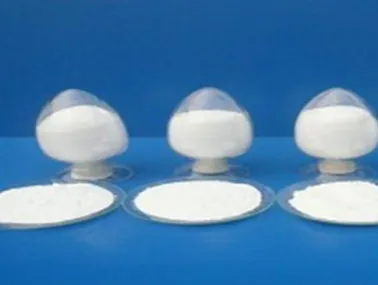
sweeteners 950 952 955
Understanding Sweeteners A Closer Look at E950, E952, and E955
Sweeteners play a pivotal role in the food and beverage industry, providing sweetness with minimal calories. Among the various types of sweeteners available, E950 (Acesulfame K), E952 (Cyclamate), and E955 (Sucralose) are particularly noteworthy. This article delves into these three sweeteners, exploring their characteristics, applications, and health considerations.
Acesulfame K (E950)
Acesulfame K, often referred to as Acesulfame Potassium, is a high-intensity artificial sweetener that is approximately 200 times sweeter than sucrose (table sugar). It was first discovered in 1967 and has gained approval in numerous countries for use in food and beverages. Acesulfame K is often used in combination with other sweeteners to enhance sweetness and improve flavor profile while masking any bitter aftertaste.
One of the key advantages of Acesulfame K is its stability under heat, making it suitable for baking and cooking. It does not contribute to tooth decay and is ideal for diabetic individuals since it does not raise blood sugar levels. However, some studies have raised concerns over its long-term effects, and as with many artificial sweeteners, moderation is recommended.
Cyclamate (E952)
Cyclamate was discovered in the 1930s and is another artificial sweetener that is approximately 30 to 50 times sweeter than sugar. It is commonly used in countries outside of the United States, especially in Europe and Asia, due to its cost-effectiveness and ability to blend well with other sweeteners. Cyclamate is often used in diet sodas, sugar-free products, and as a tabletop sweetener.
sweeteners 950 952 955

Despite its popularity, cyclamate has a controversial history; it was banned in the United States in the 1970s due to studies suggesting a potential link to cancer in laboratory animals. However, subsequent research has produced mixed results, leading to ongoing debates about its safety. In many parts of the world, including the European Union, cyclamate is still considered safe for consumption within established regulatory limits.
Sucralose (E955)
Sucralose, marketed under the brand name Splenda, is a chlorinated derivative of sucrose, making it approximately 600 times sweeter than sugar. Its unique chemical structure allows it to maintain its sweetness even after cooking, making it a popular choice in baked goods and other heat-processed foods. Sucralose is also widely used in beverages, dairy products, and condiments.
One of the significant advantages of sucralose is that it contains no calories since the body does not metabolize it. This makes it an appealing option for those looking to reduce calorie intake or manage weight. Moreover, numerous studies have supported the safety of sucralose, establishing it as a suitable sweetener for the general population, including people with diabetes.
Health Considerations and Conclusion
While artificial sweeteners like E950, E952, and E955 offer alternatives to sugar with fewer calories, their safety continues to be a topic of discussion. Regulatory bodies such as the FDA and EFSA have evaluated these sweeteners and established acceptable daily intake levels, which suggest that moderate consumption is safe for most individuals. However, consumers should remain informed and attentive to their own bodies' responses to these substances.
In conclusion, E950 (Acesulfame K), E952 (Cyclamate), and E955 (Sucralose) each serve distinct purposes in the realm of sweeteners. Understanding their properties, uses, and health implications can help consumers make informed dietary choices while enjoying the sweetness they seek without the added calories. As the demand for healthier alternatives continues to grow, these sweeteners will likely remain relevant in the food industry for years to come.
-
Buy High-Quality Trichloroisocyanuric Acid for Sale | TCCA 90% SupplierNewsAug.30,2025
-
Pure Sodium Dichloroisocyanurate Dihydrate | Powerful DisinfectantNewsAug.29,2025
-
Industrial Chemicals: Quality & Purity for Every IndustryNewsAug.28,2025
-
Nitrile Rubber Honoring Strict Production StandardsNewsAug.22,2025
-
Aspartame Ingredients Honoring Food Safety ValuesNewsAug.22,2025
-
Fertilizer for Balanced Plant NutritionNewsAug.22,2025
-
Cyanide Gold Processing with High Purity AdditivesNewsAug.22,2025
Hebei Tenger Chemical Technology Co., Ltd. focuses on the chemical industry and is committed to the export service of chemical raw materials.
-

view more DiethanolisopropanolamineIn the ever-growing field of chemical solutions, diethanolisopropanolamine (DEIPA) stands out as a versatile and important compound. Due to its unique chemical structure and properties, DEIPA is of interest to various industries including construction, personal care, and agriculture. -

view more TriisopropanolamineTriisopropanolamine (TIPA) alkanol amine substance, is a kind of alcohol amine compound with amino and alcohol hydroxyl, and because of its molecules contains both amino and hydroxyl. -

view more Tetramethyl Thiuram DisulfideTetramethyl thiuram disulfide, also known as TMTD, is a white to light-yellow powder with a distinct sulfur-like odor. It is soluble in organic solvents such as benzene, acetone, and ethyl acetate, making it highly versatile for use in different formulations. TMTD is known for its excellent vulcanization acceleration properties, which makes it a key ingredient in the production of rubber products. Additionally, it acts as an effective fungicide and bactericide, making it valuable in agricultural applications. Its high purity and stability ensure consistent performance, making it a preferred choice for manufacturers across various industries.





